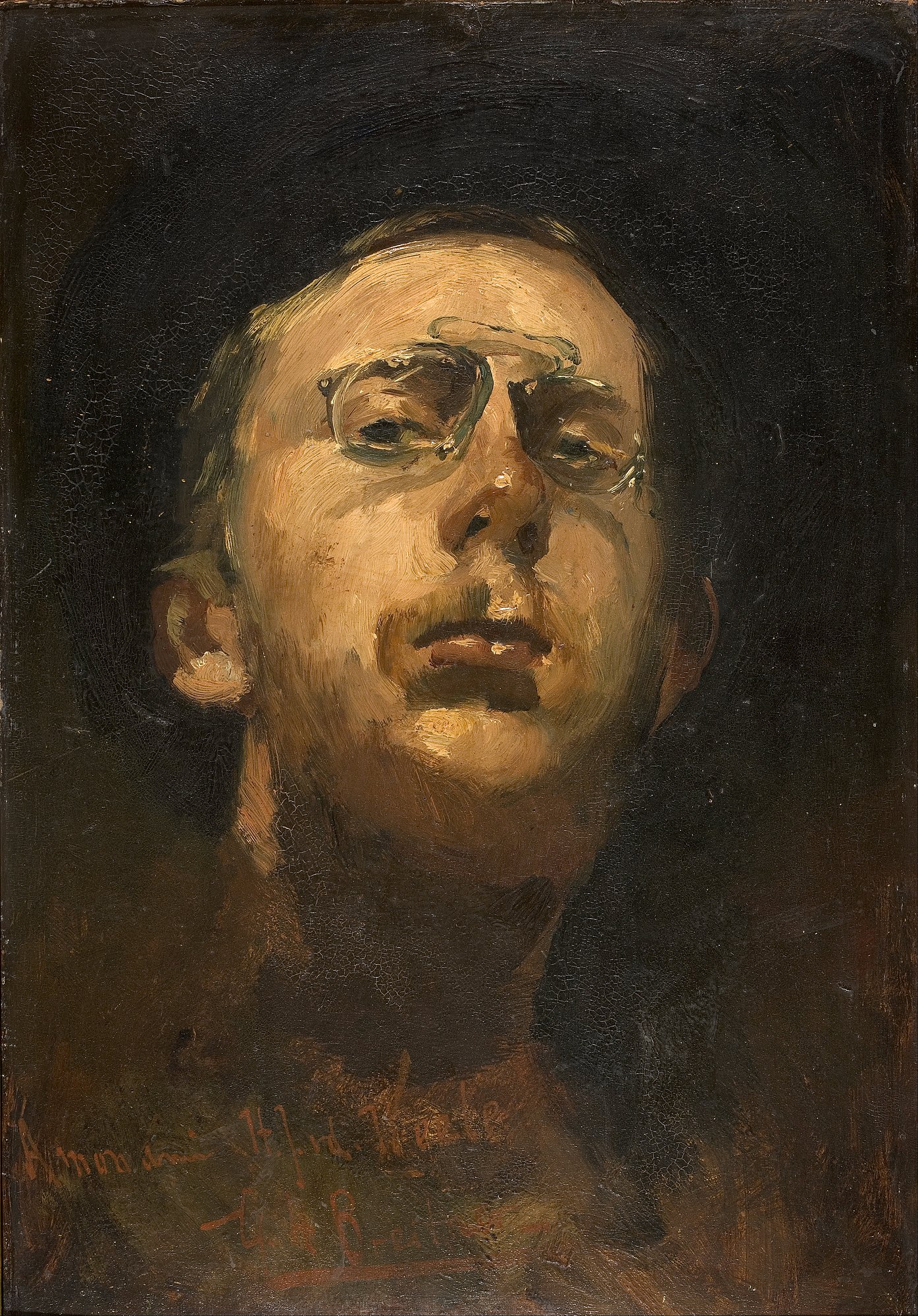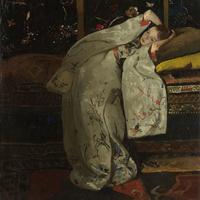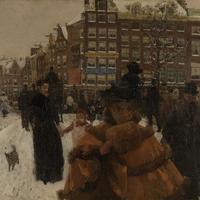More about George Hendrik Breitner
Works by George Hendrik Breitner

Contributor
Expelled from art school, George Hendrik Breitner was "already developing into a Hague School iconoclast" when he met Vincent van Gogh.
Influenced by the soft curves and specific tones of the Barbizon School, the Hague School was not an actual school but a term of the critic Jacob van Santen Kolff, lumping a bunch of Hague artists together into one group to make it easier to write about them. Breitner belongs to the third generation of the Hague School, which van Santen Kolff described by their use of the color gray, like the weather,and, often, the moods of the people in the gray climate.
With his buddy van Gogh, Breitner prowled the docks of Rotterdam and the working-class neighborhoods of the Hague, interested especially in the red-light district. While van Gogh was radical in his art, he was conservative in his attitude, with a real distaste for the "modern Babylon" of city life, as he called it. Breitner, on the other hand, loved the city, especially the parts that were run-down and under construction. Breitner was kind of a grimy dude, as you might say, interested in the funky, dirty, unfinished character of the city. Rotterdam "is a beautiful city," he wrote, "always turbulent, dirty and picturesque, especially the vest and the harbor-neighborhoods. For the newer city I don't care at all."
Two years after meeting van Gogh, Breitner spent six months in Paris, where he did a major work, Demolition in Montmartre, showing the destruction of a building. One of the first to use photographs as models for paintings, Breitner often makes his work look unfinished and sketch-like. Interested in "erotic nudes," (read: porn) in both photography and painting, balanced with an architectural focus, Breitner's devil-may-care attitude toward art, taking the ugly, rejected aspects of the city and making them his subject, was profound in anticipating the artwork of the following century.
Sources
- Gibbons, James. "Second Sight: The Photographs of George Hendrik Breitner." Hyperallergic, Mar. 24, 2012, https://hyperallergic.com/48825/second-sight-the-photographs-of-george-….
- Lemoine, Serge. Ausst. u.d.T.: Correspondances - George Hendrik Breitner/Christian Jaccard. Paris: Argol, 2008.
- Naifeh, Stephen, and Gregory White Smith. Van Gogh: The Life. New York: Random House, 2011.
- Wieringa, Jacobine. "Breitner en Parijs. De invloed van het verblijf in Parijs op het leven en werk van George Breitner." Utrecht University, 2005, https://dspace.library.uu.nl/handle/1874/8382.
Featured Content
Here is what Wikipedia says about George Hendrik Breitner
George Hendrik Breitner (12 September 1857 – 5 June 1923) was a Dutch painter and photographer. An important figure in Amsterdam Impressionism, he is noted especially for his paintings of street scenes and harbours in a realistic style. He painted en plein air, and became interested in photography as a means of documenting street life and atmospheric effects – rainy weather in particular – as reference materials for his paintings.
Check out the full Wikipedia article about George Hendrik Breitner












